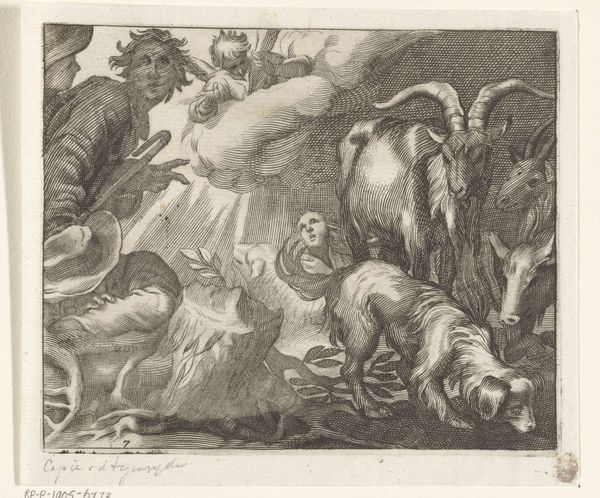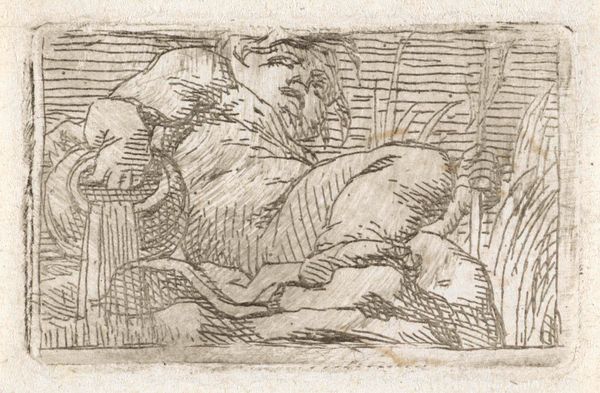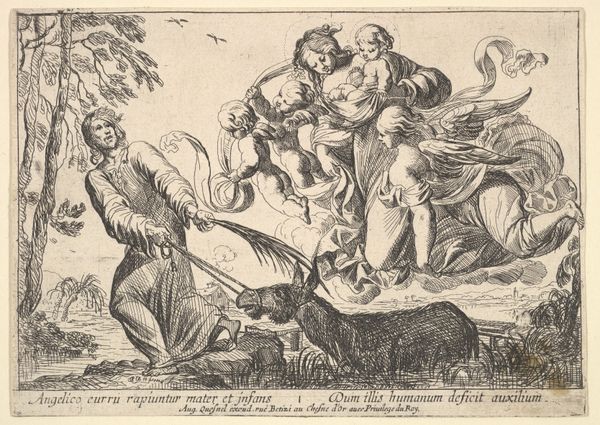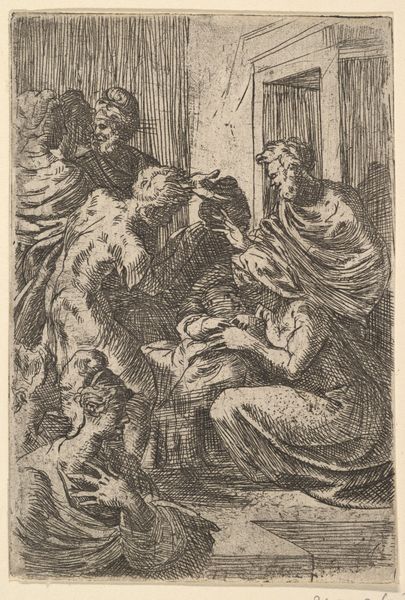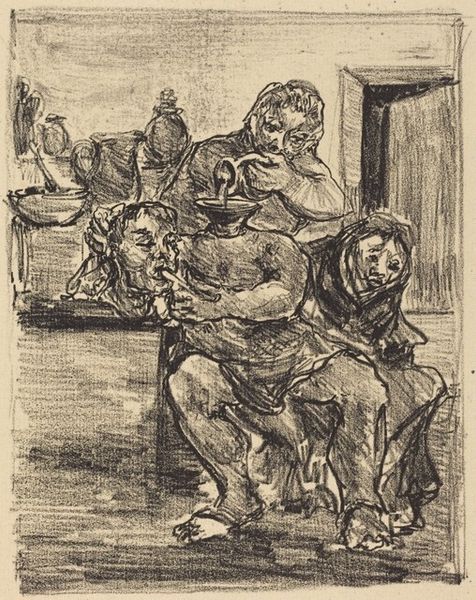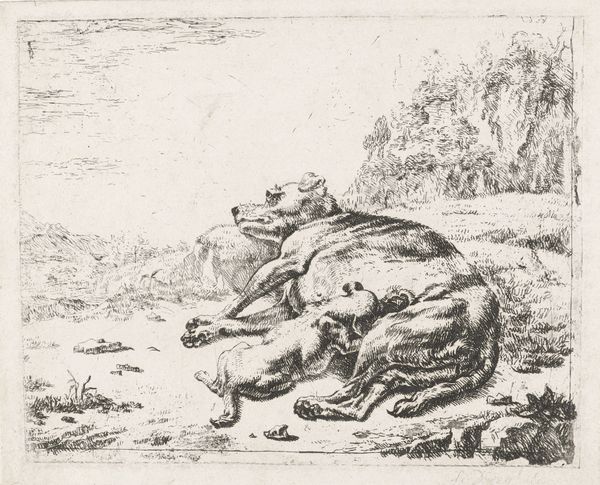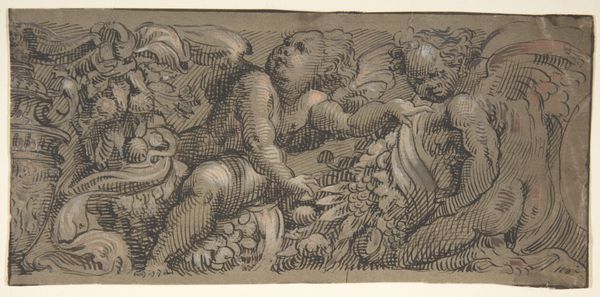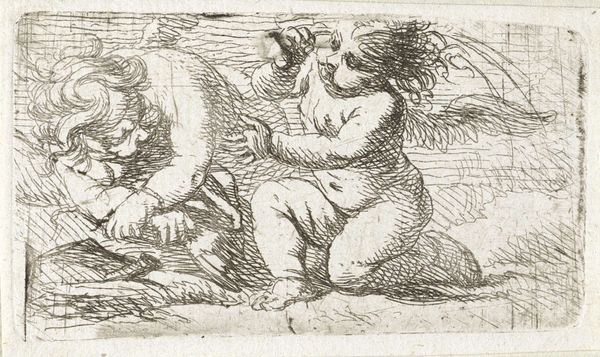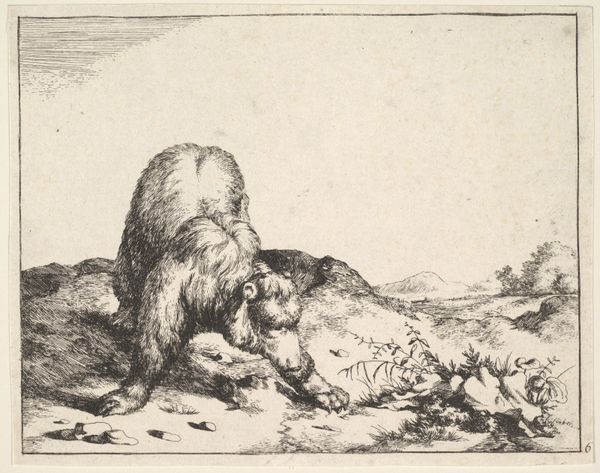
Dimensions: width 59 mm, height 80 mm
Copyright: Rijks Museum: Open Domain
This is “Nest met jonge hondjes,” made by Tethart Philip Christian Haag, using etching, a printmaking technique. The process starts with a metal plate, usually copper or zinc, covered with a waxy, acid-resistant ground. The artist then draws their image into the ground with a sharp needle, exposing the metal. When the plate is immersed in acid, the exposed lines are “bitten,” creating grooves. The longer the plate sits in the acid, the deeper the lines become, which in turn influences the darkness of the printed line. After the ground is removed, ink is applied to the plate, filling the etched lines. The surface is wiped clean, and then the plate is pressed onto paper. The pressure pulls the ink from the grooves onto the paper, creating the print. The distinct character of Haag’s image comes from the combination of deliberate mark-making and unpredictable chemistry. To really appreciate it, consider the labor involved, and the many steps required to bring the image into being. This etching process connects Haag’s work to a much wider world of craftsmanship and print production. By understanding these materials, processes, and social contexts, we can see just how inventive it truly is.
Comments
No comments
Be the first to comment and join the conversation on the ultimate creative platform.

